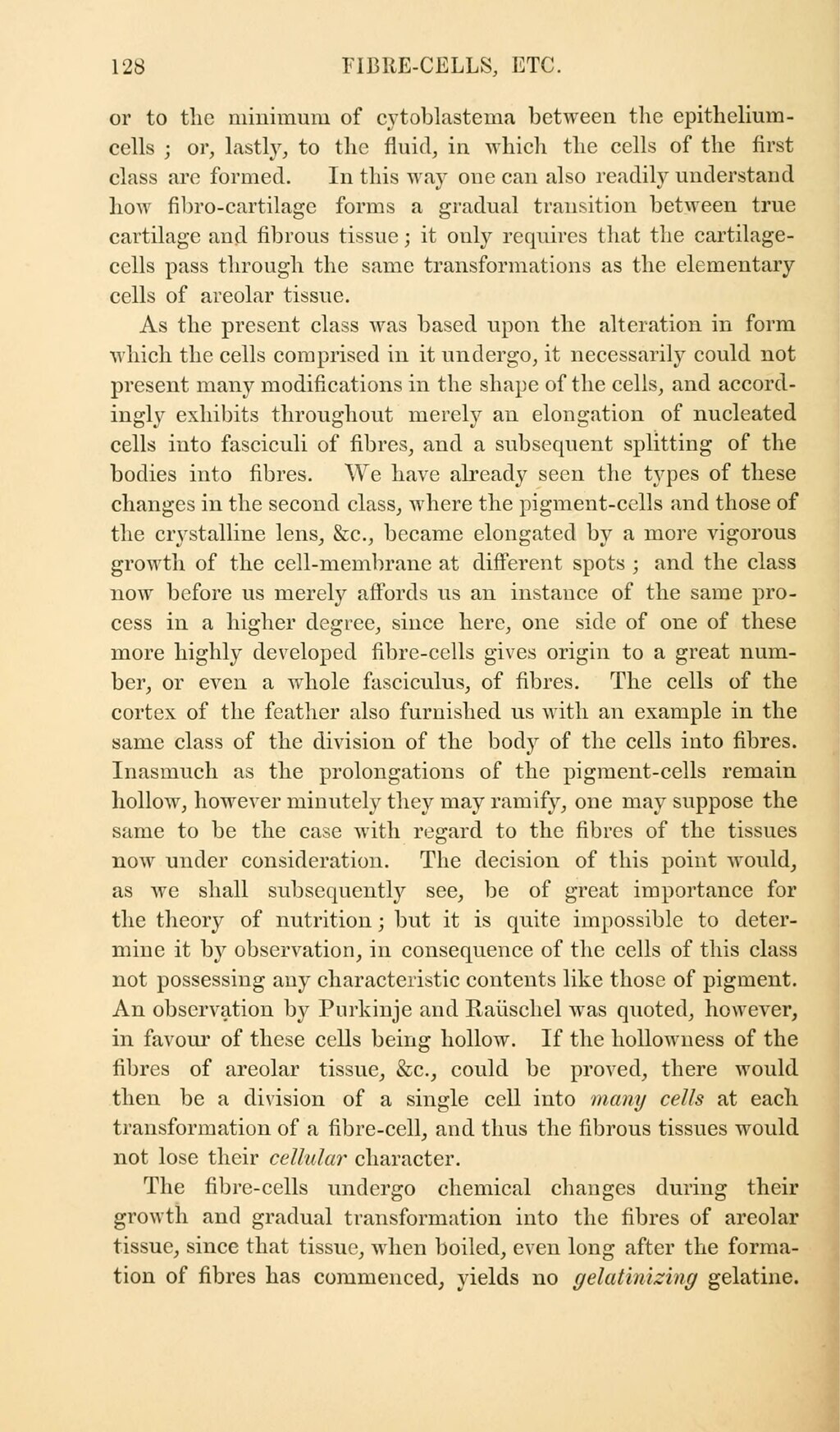or to the minimum of cytoblastema between the epithelium-cells ; or, lastly, to the fluid, in which the cells of the first class are formed. In this way one can also readily understand how fibro-cartilage forms a gradual transition between true cartilage and fibrous tissue; it only requires that the cartilage- cells pass through the same transformations as the elementary cells of areolar tissue.
As the present class was based upon the alteration in form which the cells comprised in it undergo, it necessarily could not present many modifications in the shape of the cells, and accordingly exhibits throughout merely an elongation of nucleated cells into fasciculi of fibres, and a subsequent splitting of the bodies into fibres. We have already seen the types of these changes in the second class, where the pigment-cells and those of the crystalline lens, &c., became elongated by a more vigorous growth of the cell-membrane at different spots ; and the class now before us merely affords us an instance of the same pro- cess in a higher degree, since here, one side of one of these more highly developed fibre-cells gives origin to a great number, or even a whole fasciculus, of fibres. The cells of the cortex of the feather also furnished us with an example in the same class of the division of the body of the cells into fibres. Inasmuch as the prolongations of the pigment-cells remain hollow, however minutely they may ramify, one may suppose the same to be the case with regard to the fibres of the tissues now under consideration. The decision of this point would, as we shall subsequently see, be of great importance for the theory of nutrition; but it is quite impossible to determine it by observation, in consequence of the cells of this class not possessing any characteristic contents like those of pigment. An observation by Purkinje and Raüschel was quoted, however, in favour of these cells being hollow. If the hollowness of the fibres of areolar tissue, &c., could be proved, there would then be a division of a single cell into many cells at each transformation of a fibre-cell, and thus the fibrous tissues would not lose their cellular character.
The fibre-cells undergo chemical changes during their growth and gradual transformation into the fibres of areolar tissue, since that tissue, when boiled, even long after the forma- tion of fibres has commenced, yields no gelatinizing gelatine.
